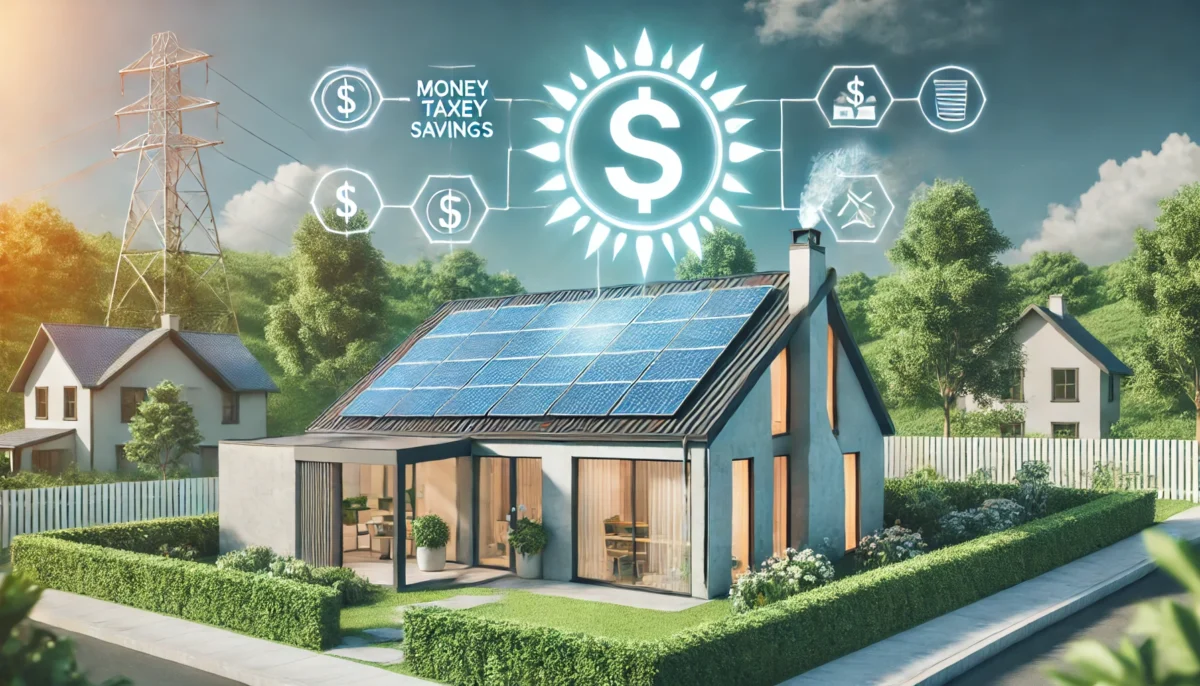Huge solar panel government subsidies in the USA in 2025! See How You Can Get Thousands in Subsidies!
Why Subsidies for Solar Power Are Important
Rising energy costs and growing environmental concerns have made solar power popular as a solution for businesses and homes. Going solar is now more affordable than ever thanks to a number of Solar Panel Government Subsidies in the USA in 2025. These incentives, which range from state-level rebates to federal tax credits, can significantly reduce your long-term and upfront expenses.
We’ll discuss the main government incentives for solar panels in this article, as well as how to apply and how much you can save.

Federal and State Solar Subsidies in the United States
1. Investment Tax Credit, or Federal Solar Tax Credit (ITC)
The largest federal solar incentive is the Investment Tax Credit (ITC). By 2025, homeowners will be able to claim a 30% federal tax deduction for the cost of their solar system.
- It includes coverage for battery storage, solar panels, and installation fees.
- Accessible for solar systems installed in homes and businesses.
- There is no limit to how much you can claim.
For example, if your solar system costs $20,000, you may be eligible for a tax credit of $6,000.
2. Solar Incentives by State
Many states offer additional grants, tax credits, and rebates beyond the ITC. Here are some notable examples:
- California: Battery storage rebates are offered under the Self-Generation Incentive Program (SGIP).
- New York: Residential solar installations can get upfront rebates through the Sun Program.
- Texas: Many utilities reduce upfront costs by offering cash rebates.
- Florida: Solar installations are exempt from both property taxes and state income taxes.
Check with your state’s energy department for available programs!
How to Apply for Solar Subsidies: A Comprehensive Guide
- Investigate Eligibility: To find out if you qualify, check the relevant government websites or consult a licensed solar vendor.
- Obtain Several Solar Quotes: To optimise savings, evaluate costs and offerings from various suppliers.
- Make sure the Certified Installer you select is enrolled in the incentive programs offered by your state.
- Apply for the ITC: To claim the 30% tax credit, utilise IRS Form 5695 when submitting your federal taxes.
- Apply for Local and State Incentives: For information on rebate forms and application procedures, visit the website of your utility company or state’s energy department.
- Install Solar System: After approval, move forward with installation to begin reducing your energy costs!
How much can solar subsidies help you save?
Your location, system size, and available incentives all affect how much you save overall. Here’s an approximate breakdown:
| Solar System Cost | Federal ITC (30%) | State Rebates | Total Savings |
|---|---|---|---|
| $15,000 | $4,500 | $2,000 | $6,500 |
| $20,000 | $6,000 | $3,000 | $9,000 |
| $25,000 | $7,500 | $4,000 | $11,500 |
Additional savings come from reduced electricity bills, averaging $1,000–$2,000 per year!
FAQ Frequently Asked Questions on Solar Panel Subsidies
Question 1: Is it possible to combine state and federal solar incentives?
Absolutely! You can maximize your savings by combining the federal tax credit with utility incentives and state rebates.
Question 2: Are rental properties eligible for solar incentives?
Yes, some state incentives and the federal ITC may be available to landlords who install solar panels on rental properties.
Question 3: What if my tax liability is insufficient to use the entire credit?
If your tax bill is less than the ITC amount you can carry over the remaining credit to subsequent tax years.
Question 4: What is the duration of the solar incentives?
If Congress does not extend the 30% ITC, it will begin to decline after 2032.
Question 5: Can I get a solar rebate if I finance my system?
Absolutely! Even if you take out a loan, you are still eligible for the full 30% ITC and applicable state incentives.
Remarks: Take advantage of solar incentives right away!
Converting to solar power in 2025 is a wise financial move because there are huge government incentives. You can enjoy long-term energy savings and significantly reduce your initial expenses by taking advantage of federal, state, and utility incentives.
Are you ready to make the switch? To start saving, contact your nearest solar provider now!
Related Article: EV Subsidies in the USA in 2025: Get Up to $7,500 in Tax Credits & More!
- U.S. Department of Energy – Solar Incentives
- Database of State Incentives for Renewables & Efficiency (DSIRE)
- IRS Form 5695: Residential Energy Credits
